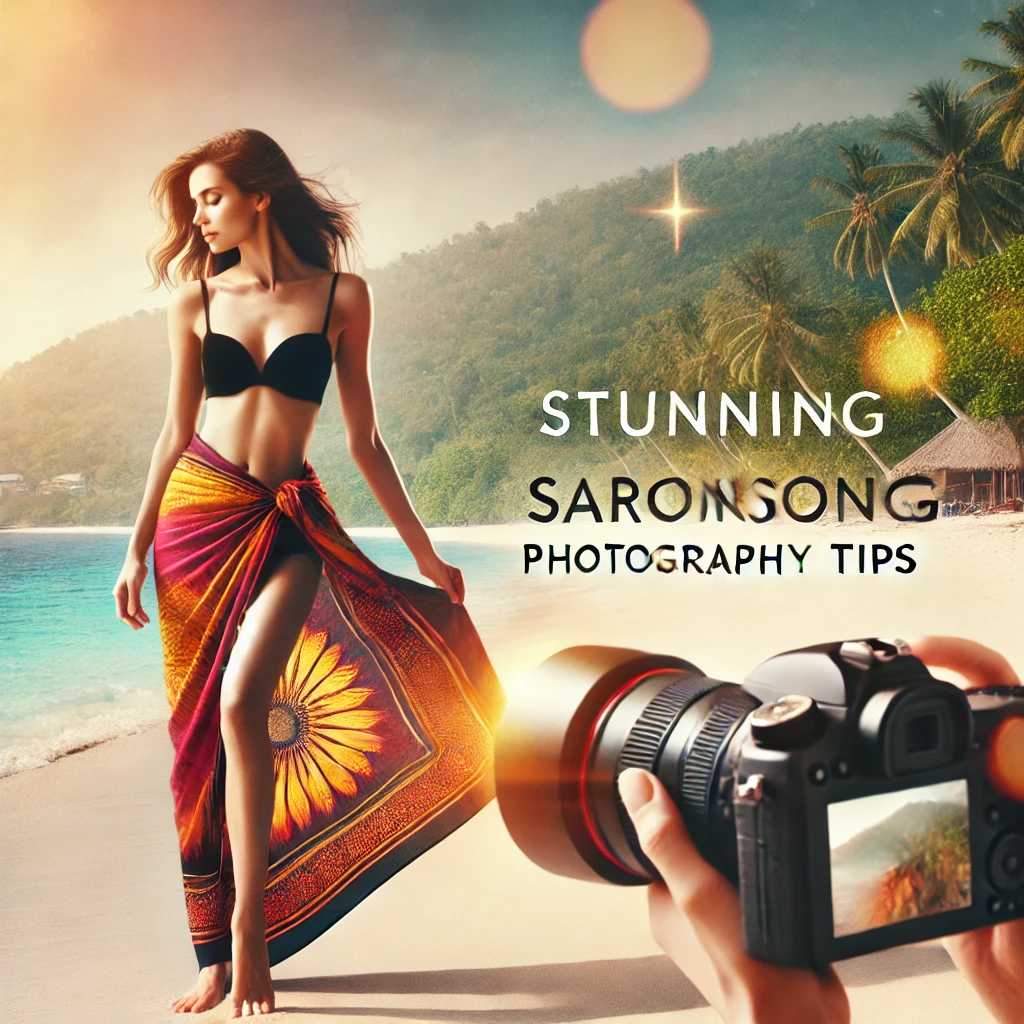Sarong photography is an essential aspect of lifestyle and fashion branding. Whether for beachwear collections or casual summer looks, capturing the elegance of sarongs requires a blend of technical expertise, creativity, and an eye for aesthetics. This guide covers everything you need to know to capture stunning sarong photography for lifestyle brands.
1. Understanding Sarong Photography
Before diving into techniques, it’s important to understand the core aspects of sarong photography.
- Fabric Flow and Movement: Sarongs are often lightweight and flowy. Capturing movement enhances their appeal.
- Cultural Significance: Many brands integrate traditional and cultural elements into sarongs, so being mindful of their origins and purpose is essential.
- Versatility in Styling: Sarongs can be styled in multiple ways, making it important to showcase various draping methods.
2. Essential Equipment for Sarong Photography
Investing in the right equipment can drastically improve your photography quality.
- Camera: A DSLR or mirrorless camera with manual settings gives better control over lighting and exposure.
- Lenses: A 50mm or 85mm prime lens for portraits and a wide-angle lens for location shots.
- Tripod & Stabilizers: To maintain sharp focus and reduce blurriness.
- Reflectors & Diffusers: To manage harsh lighting and create balanced exposures.
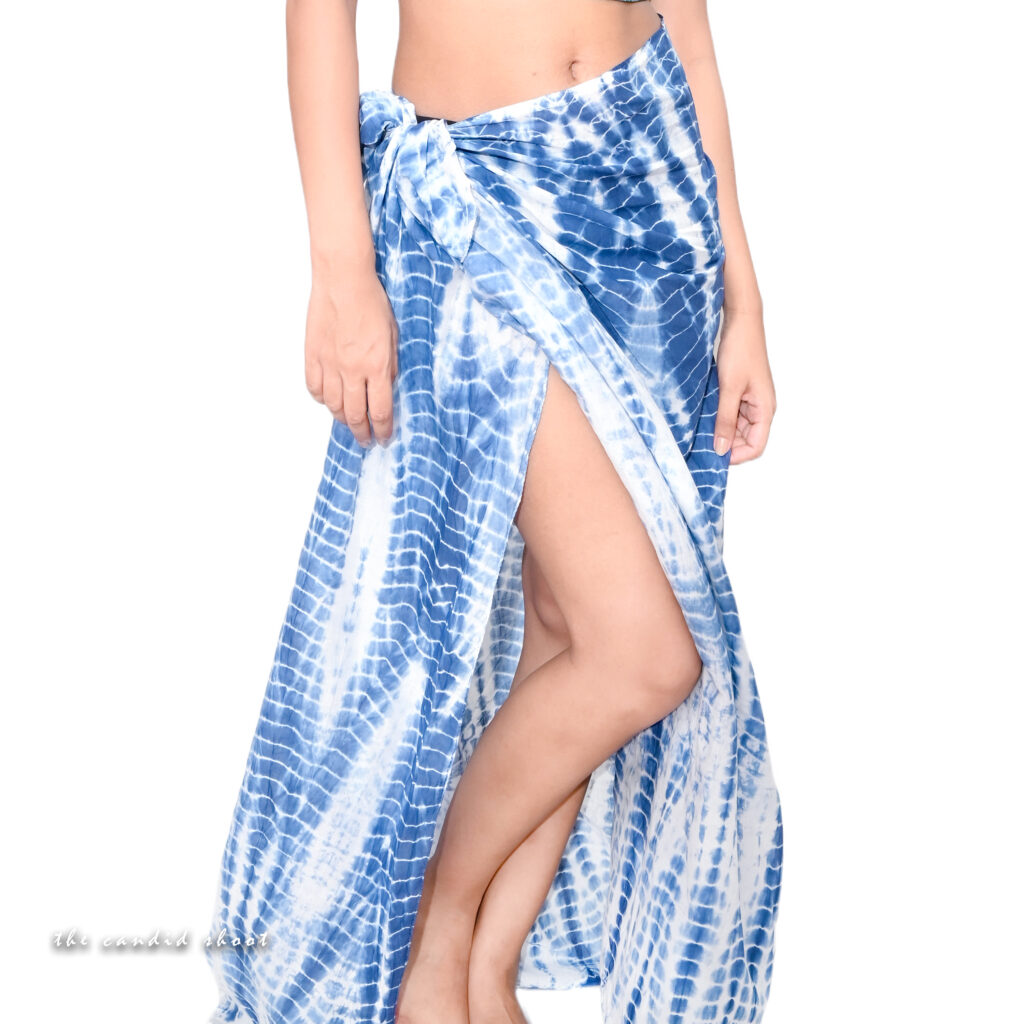
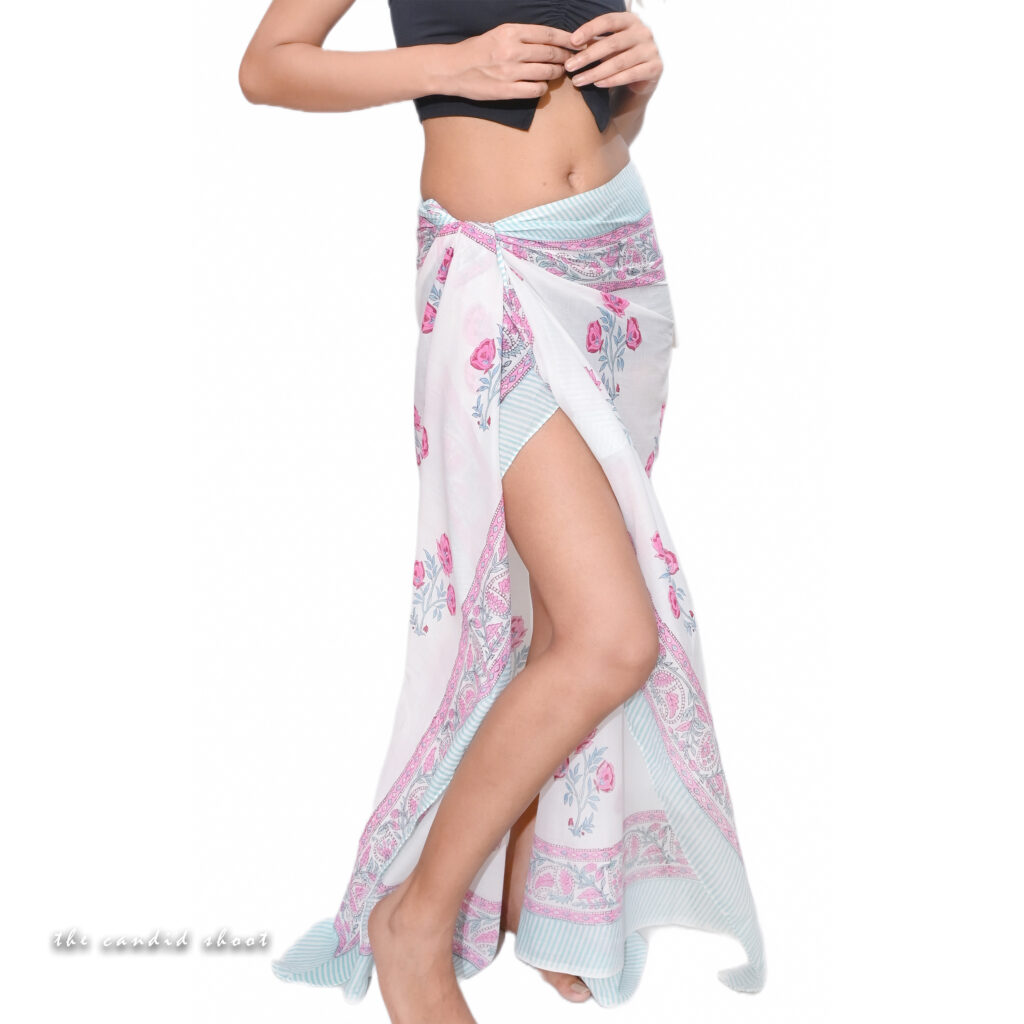
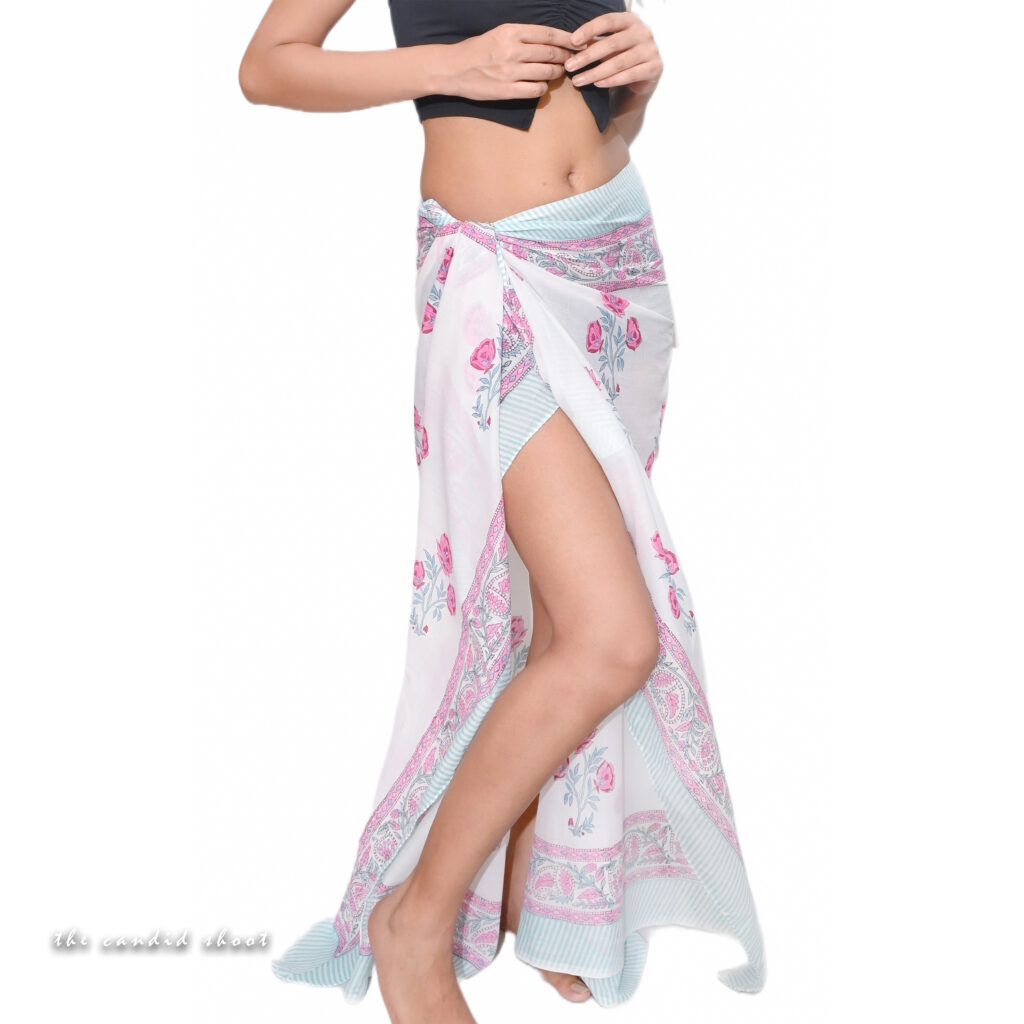
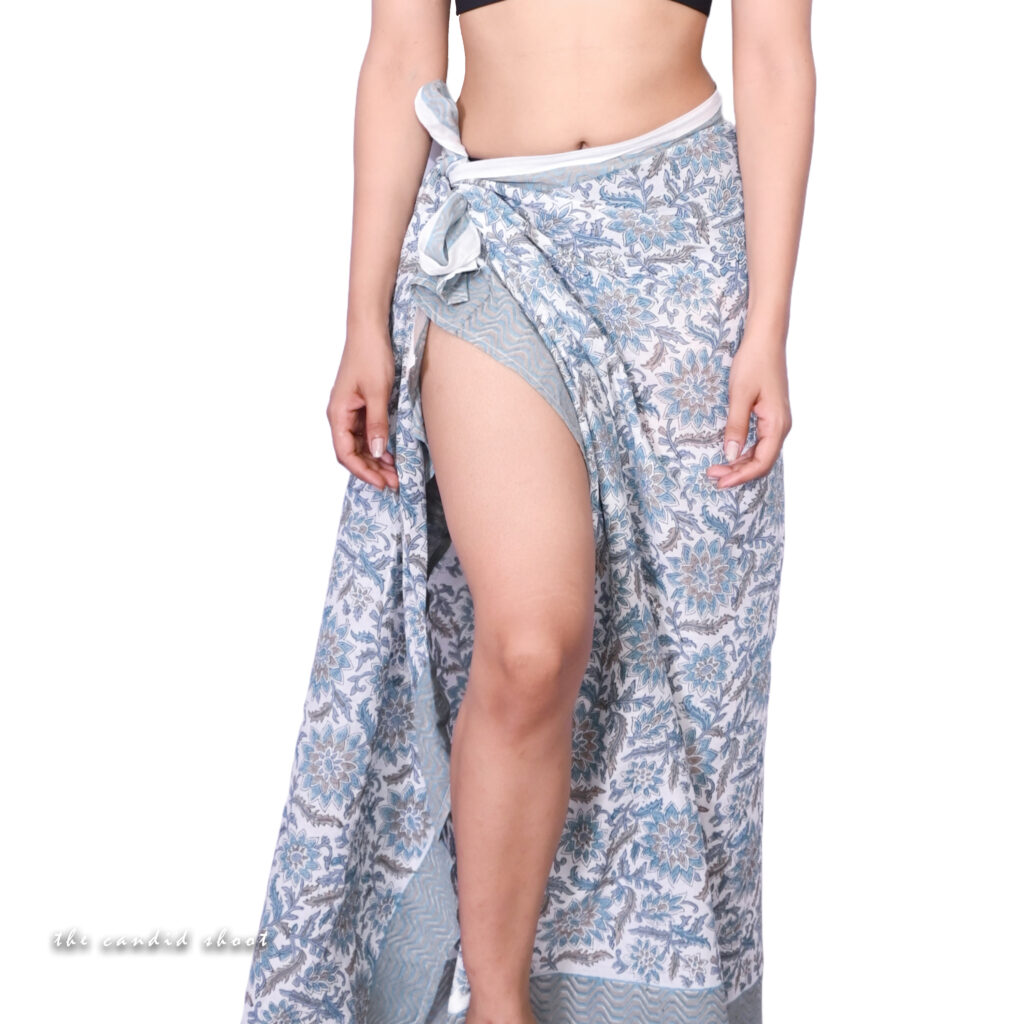
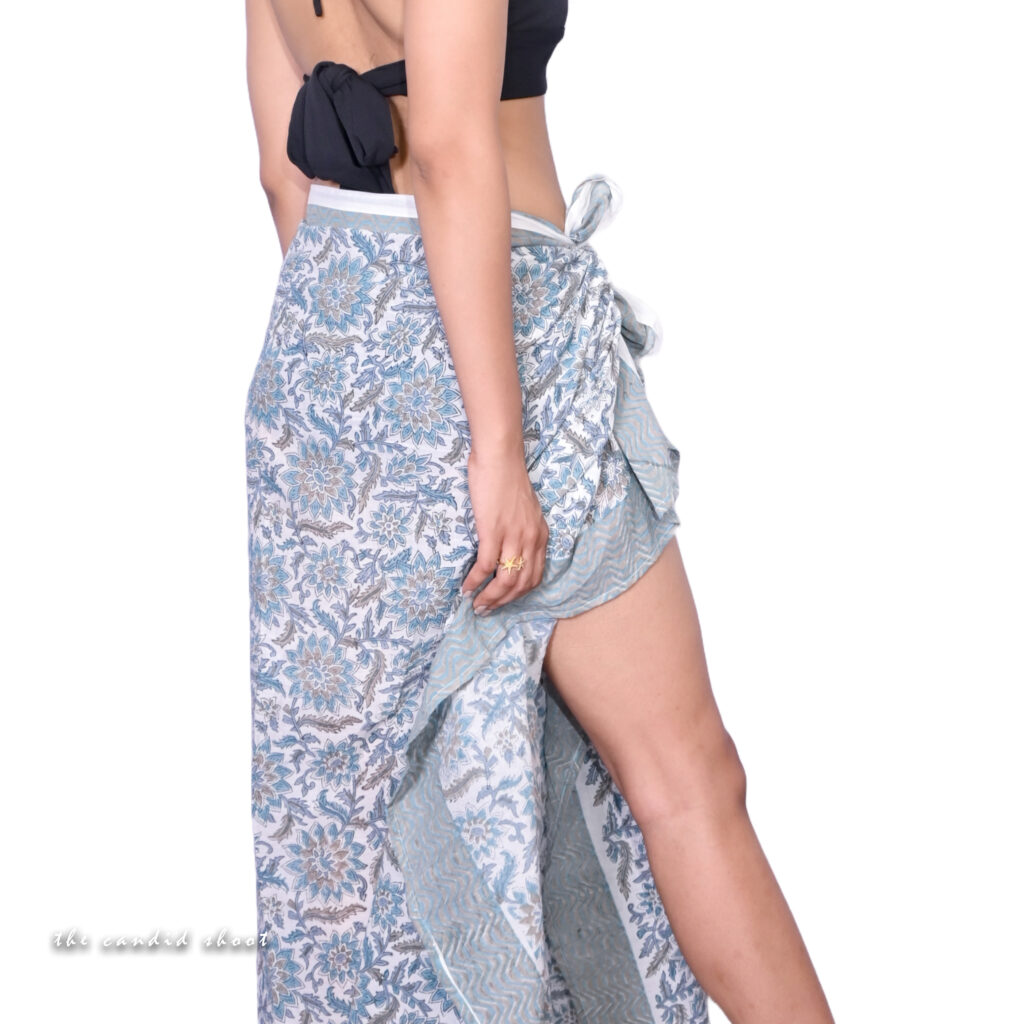
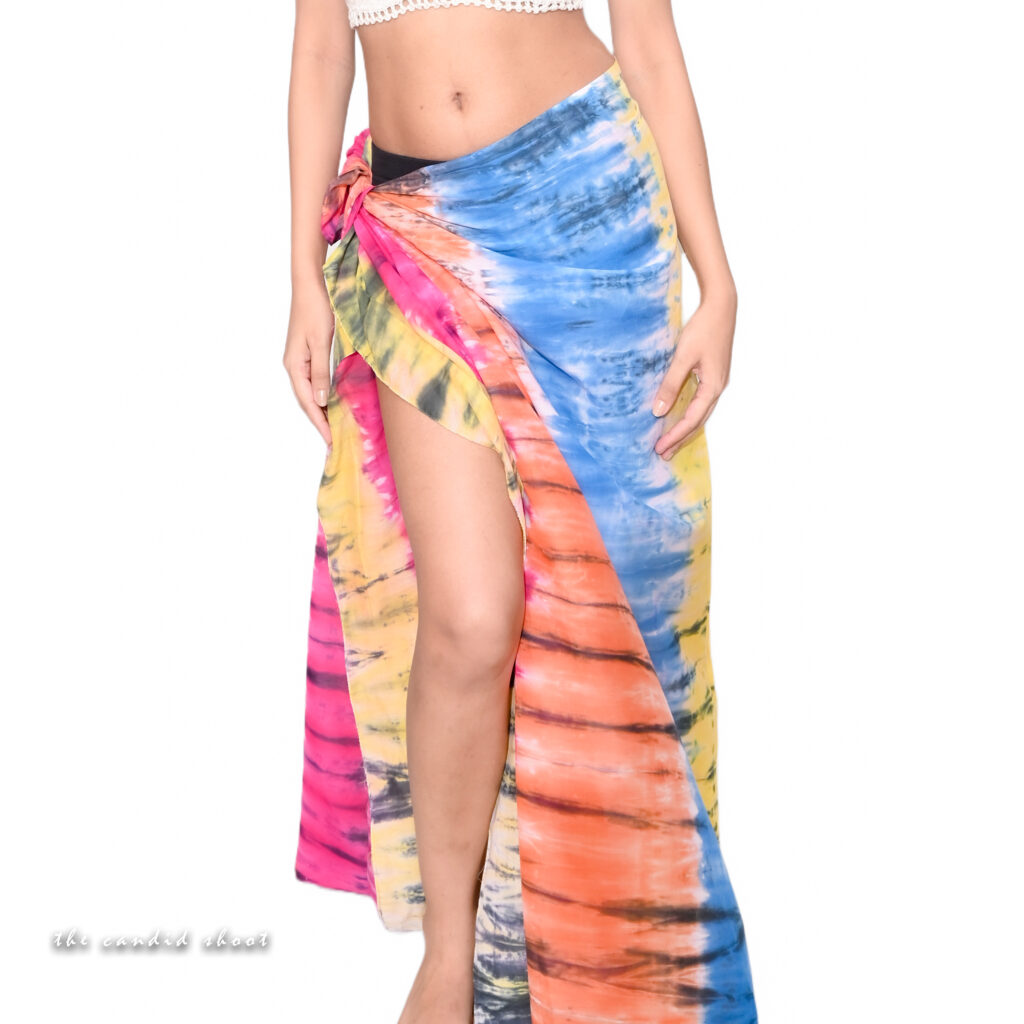

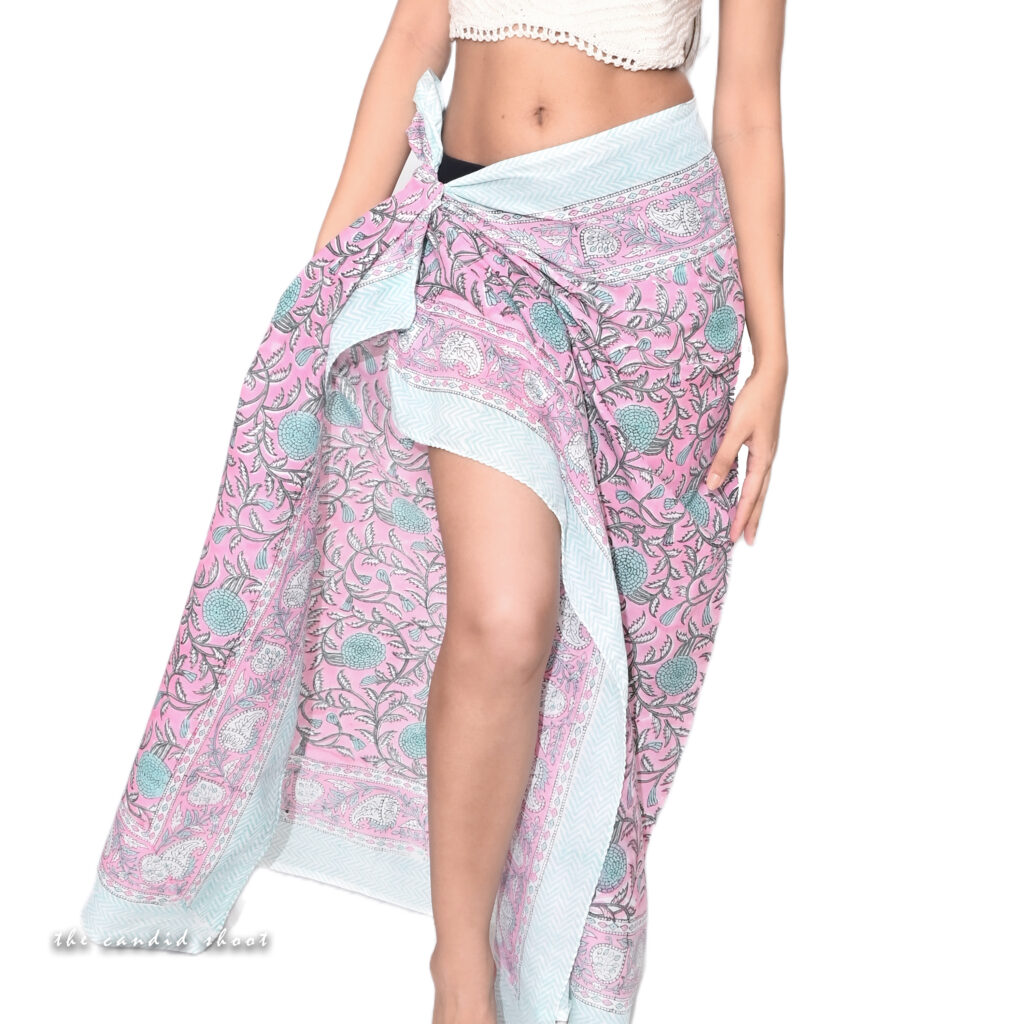

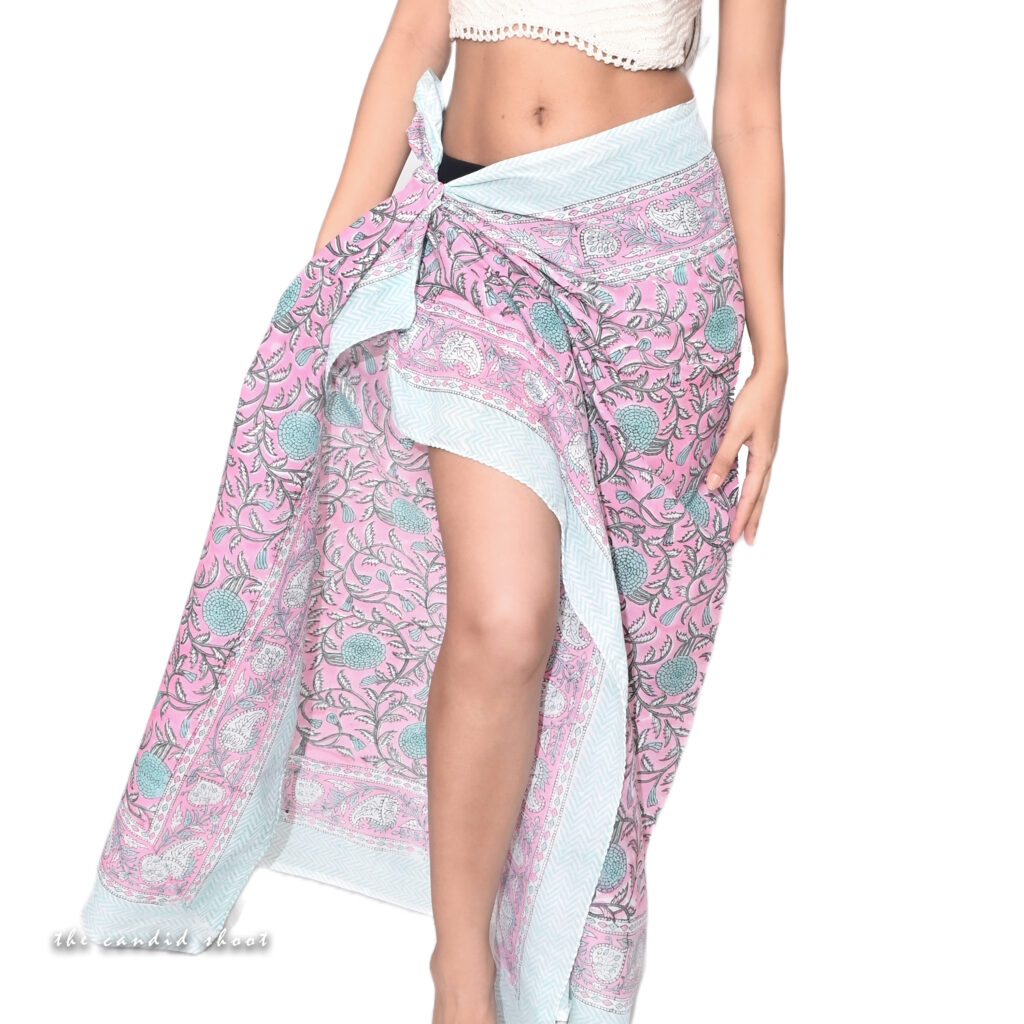
3. Selecting the Perfect Location
The backdrop plays a crucial role in enhancing the visual appeal of sarong photography.
- Beachside Settings: Classic locations for sarong photography, providing a natural and airy aesthetic.
- Tropical Gardens: Add lush greenery and a vibrant feel to the images.
- Studio Setups: Controlled lighting helps highlight intricate details and textures.
- Urban Environments: For a modern and edgy twist to traditional sarong looks.
4. Mastering Lighting Techniques
Lighting is a critical element in fashion and lifestyle photography.
- Golden Hour Lighting: Early morning or late afternoon light provides soft, flattering illumination.
- Natural Light Manipulation: Using reflectors to bounce light and diffusers to soften shadows.
- Artificial Lighting Setup: Studio lighting setups with softboxes and LED panels for indoor shoots.
5. Composition and Framing
Creating visually appealing compositions ensures your sarong photography stands out.
- Rule of Thirds: Positioning subjects strategically for balanced images.
- Leading Lines: Using the sarong’s fabric folds to direct the viewer’s eye.
- Negative Space: Allowing the subject to breathe within the frame.
- Close-Ups & Wide Shots: Highlighting intricate patterns versus full-body styling.
6. Styling and Posing Techniques
Sarongs are dynamic fashion pieces that require intentional styling and posing.
- Draping Methods: Showcasing different ways to wear a sarong (e.g., skirt, dress, wrap top).
- Movement & Flow: Encouraging models to move naturally to highlight the sarong’s versatility.
- Hand Placement: Enhancing the silhouette without overshadowing the garment.
- Interaction with Elements: Wind, water, or props to create engaging compositions.
7. Capturing the Perfect Shot
- Shoot in RAW: Ensuring high-quality images for post-processing.
- Adjusting Camera Settings:
- Aperture: f/2.8–f/5.6 for subject isolation.
- Shutter Speed: 1/500s or faster to freeze motion.
- ISO: Keep it as low as possible to reduce noise.
- Experimenting with Angles: High angles for elegance, low angles for a dramatic look.
- Using Props: Accessories like beach hats, jewelry, or sunglasses to complement the sarong.
8. Post-Processing and Editing
Polishing images in post-production enhances their final presentation.
- Color Correction: Adjusting white balance to maintain fabric vibrancy.
- Skin Retouching: Keeping it natural while removing minor blemishes.
- Sharpening and Detail Enhancement: Ensuring textures remain crisp.
- Background Adjustments: Enhancing the setting without overpowering the subject.
9. Branding and Marketing Sarong Photography
Once you’ve captured stunning sarong images, marketing them effectively is the next step.
- Social Media Optimization: Posting high-quality visuals on Instagram, Pinterest, and Facebook.
- Website & E-Commerce Listings: Uploading professionally edited photos with detailed descriptions.
- Lookbooks & Campaigns: Showcasing styled shoots in digital or print formats.
- Collaborations with Influencers: Partnering with fashion influencers to increase visibility.
Conclusion
Capture stunning sarong photography for lifestyle brands requires a combination of creativity, technical skills, and attention to detail. By mastering lighting, composition, and post-processing techniques, you can produce high-quality visuals that elevate brand aesthetics and drive engagement. Whether you’re shooting on a tropical beach or in a controlled studio, implementing these tips will ensure breathtaking results every time.

Professional Model & Portfolio Photoshoots: Show Your Best Work

Street Photography Tips, Effects & Poses – Complete Guide
-

Leica Q2 for Photography: Why It’s Loved by Photographers
-

Top Cameras Under ₹1 Lakh for Freelance Photography
Professional Model & Portfolio Photoshoots: Show Your Best Work
” Discover how to plan, style, and execute stunning portfolio photoshoots that showcase your skills, personality, and versatility. This comprehensive guide covers professional tips, posing ideas, gear suggestions, and industry insights for models and photographers.” Introduction – Why Portfolio Photoshoots Are the Cornerstone of a Photographer’s Career A well-crafted portfolio photoshoot is more than a…
Street Photography Tips, Effects & Poses – Complete Guide
Discover the ultimate guide to Street Photography with expert tips, creative effects, and dynamic poses. Learn how to capture authentic urban moments, master composition, and tell powerful visual stories through your lens. Article Outline 1. Introduction to Street Photography Street Photography is more than just taking pictures of people in public spaces — it’s about…
Leica Q2 for Photography: Why It’s Loved by Photographers
Introduction: The Cult Status of the Leica Q2 The Leica Q2 is not just a camera—it’s a statement. Combining the heritage of German precision engineering with modern digital excellence, it holds a special place in the hearts of professional and passionate photographers alike. With its full-frame sensor, prime Summilux lens, and minimalist design, the Q2…
Top Cameras Under ₹1 Lakh for Freelance Photography
Freelance photography is no longer a niche—it’s a booming creative profession that demands not only vision and hustle but also the right gear. Your camera isn’t just a tool; it’s your storytelling partner. If you’re a freelance photographer aiming to balance performance, versatility, and budget, investing in a cameras under ₹1 lakh can offer the…
Top Features of Nikon D850 That Make It Ideal for Photoshoots
Explore the top features of the Nikon D850 that make it a powerhouse for photoshoots. From exceptional resolution to dynamic range, this detailed Nikon D850 guide is built for professional and aspiring photographers. 1. Introduction When Nikon launched the D850, it quickly earned a reputation as a flagship DSLR that redefined what photographers could expect…
Panasonic S5 II Review: Powerhouse for On-the-Go Shoots
Discover why the Panasonic S5 II is the ultimate hybrid camera for photographers and videographers on the move. This detailed Panasonic S5 II Review explores its performance, features, and value for creative professionals. Table of Contents ( Panasonic S5 II Review ) 1. Introduction In a rapidly evolving mirrorless camera landscape, creators seek devices that…


